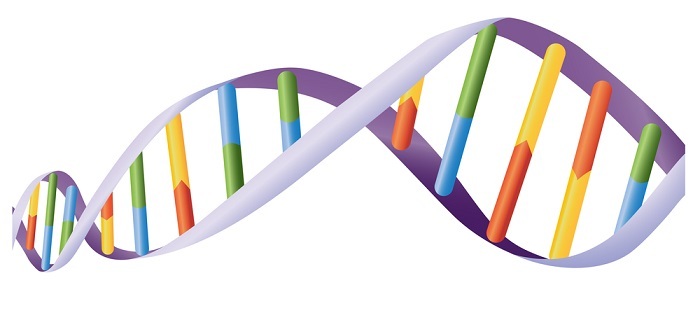
 Data Structure
Data Structure Networking
Networking RDBMS
RDBMS Operating System
Operating System Java
Java MS Excel
MS Excel iOS
iOS HTML
HTML CSS
CSS Android
Android Python
Python C Programming
C Programming C++
C++ C#
C# MongoDB
MongoDB MySQL
MySQL Javascript
Javascript PHP
PHP
- Selected Reading
- UPSC IAS Exams Notes
- Developer's Best Practices
- Questions and Answers
- Effective Resume Writing
- HR Interview Questions
- Computer Glossary
- Who is Who
What is Z-DNA and What Sequences Can Form it?
Introduction
DNA (Deoxyribonucleic acid) is a long polymer composed of four types of nucleotides: Adenine (A), Cytosine (C), Guanine (G), and Thymine (T). These nucleotides form base pairs, with A pairing with T, and C pairing with G.
DNA molecules are generally double stranded, with the two strands running in opposite directions, and the base pairs stacked in the center. This structure is known as the B-form DNA, and it is the most common form of DNA found in cells.

Z-DNA: Structure and Sequence
There is another form of DNA known as Z-DNA that differs from B-DNA in both structure and sequence.
Z-DNA has a left-handed helical structure, meaning it twists in the opposite direction compared to B-DNA. The structure of Z-DNA has a zig-zag pattern, with the base pairs tilted towards the backbone. The helix has a diameter of 18 angstroms, and each turn of the helix has 12 base pairs.
The major groove of Z-DNA is narrow and deep, while the minor groove is wide and shallow, which is the opposite of B-DNA.
The sequence of Z-DNA is different from B-DNA as well. Z-DNA is formed when the DNA sequence has a high density of alternating purine-pyrimidine bases, such as
CGCGCGCGCGCGCGCGCGCGCGCGCGCGCGCGCGCGCGCG.
These sequences have a high propensity to adopt the left-handed helical structure, as the alternating pattern allows the backbone to take on a more extended conformation that is favorable for the formation of the Z-DNA helix.
Z-DNA can also be formed by sequences with a high density of CpG dinucleotides, such as
GCGCGCGCGCGCGCGCGCGCGCGCGCGCGCGCGCGCGCGC
as the methylation of cytosine in the CpG dinucleotide can stabilize the Z-DNA structure.
Formation of Z-DNA
The formation of Z-DNA can be triggered by different factors, such as changes in ionic conditions, temperature, and supercoiling. Z-DNA is more stable at high salt concentrations, as the cations in the salt can neutralize the negative charge of the DNA backbone and stabilize the left-handed helical conformation. Changes in temperature can also affect the formation of Z-DNA, as the helical structure is more stable at lower temperatures. Supercoiling, which is the twisting of the DNA double helix, can also induce the formation of Z-DNA, as the changes in DNA topology can strain the helix and favor the adoption of the left-handed helical structure.
Functions of Z-DNA
The biological function of Z-DNA is not yet fully understood, but it has been suggested to have roles in transcription, replication, and DNA repair. Z-DNA is often found at the sites of active transcription, and it has been proposed to play a role in the regulation of gene expression. Z-DNA can induce conformational changes in the DNA molecule that can affect the binding of transcription factors and RNA polymerase, which can modulate the transcriptional activity of the gene.
Z-DNA has also been implicated in DNA replication and repair. During DNA replication, the DNA molecule is unwound by the helicase enzyme, and the two strands are separated. Z-DNA can form during replication, and it has been suggested that the formation of Z-DNA can slow down or stall the replication machinery, leading to errors in replication and DNA damage. Z-DNA has also been proposed to have a role in the recognition of damaged DNA.
FAQs
Q1. What is the difference between Z-DNA and B-DNA?
Ans. Z-DNA differs from B-DNA in both structure and sequence.
Z-DNA has a left-handed helical structure, The structure of Z-DNA has a zig-zag pattern, with the base pairs tilted towards the backbone. The sequence of Z-DNA is formed when the DNA sequence has a high density of alternating purine-pyrimidine bases.
B-DNA has a right-handed helical structure. B-DNA has a more regular structure, with the base pairs stacked in the center of the helix, and the sequence can be any combination of A, C, G, and T.
Q2. How is Z-DNA formed?
Ans. Z-DNA can be formed by different factors, such as changes in ionic conditions, temperature, and supercoiling. Z-DNA is more stable at high salt concentrations, and changes in temperature can also affect the formation of Z-DNA, as the helical structure is more stable at lower temperatures. Supercoiling can induce the formation of Z-DNA, as the changes in DNA topology can strain the helix and favor the adoption of the left-handed helical structure.
Q3. What is the biological function of Z-DNA?
Ans. The biological function of Z-DNA it is often found at the sites of active transcription, and it has been proposed to play a role in the regulation of gene expression.
Z-DNA can induce conformational changes in the DNA molecule that can affect the binding of transcription factors and RNA polymerase, which can modulate the transcriptional activity of the gene.
Z-DNA has also been implicated in DNA replication and repair, and it has been suggested that the formation of Z-DNA can slow down or stall the replication machinery, leading to errors in replication and DNA damage.

